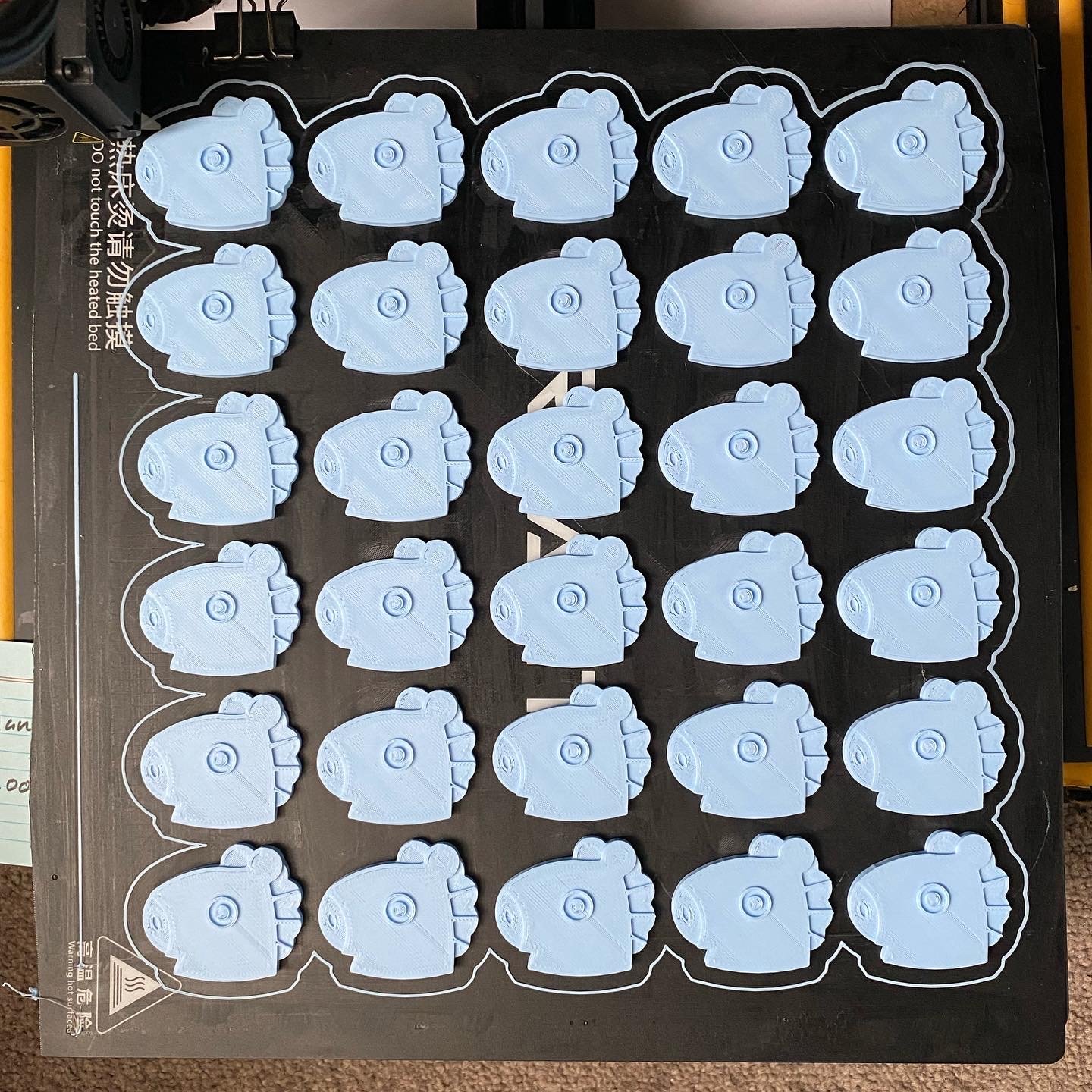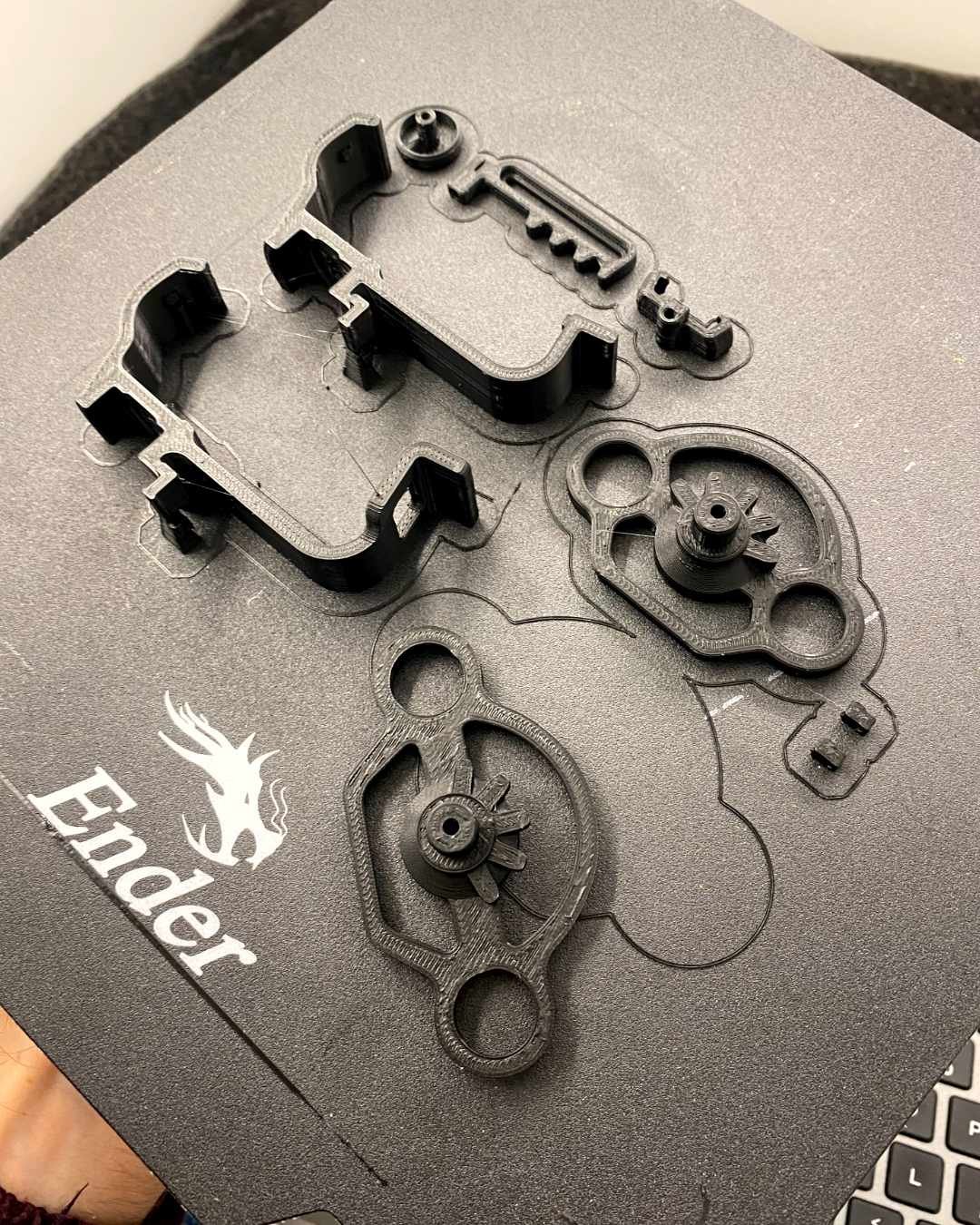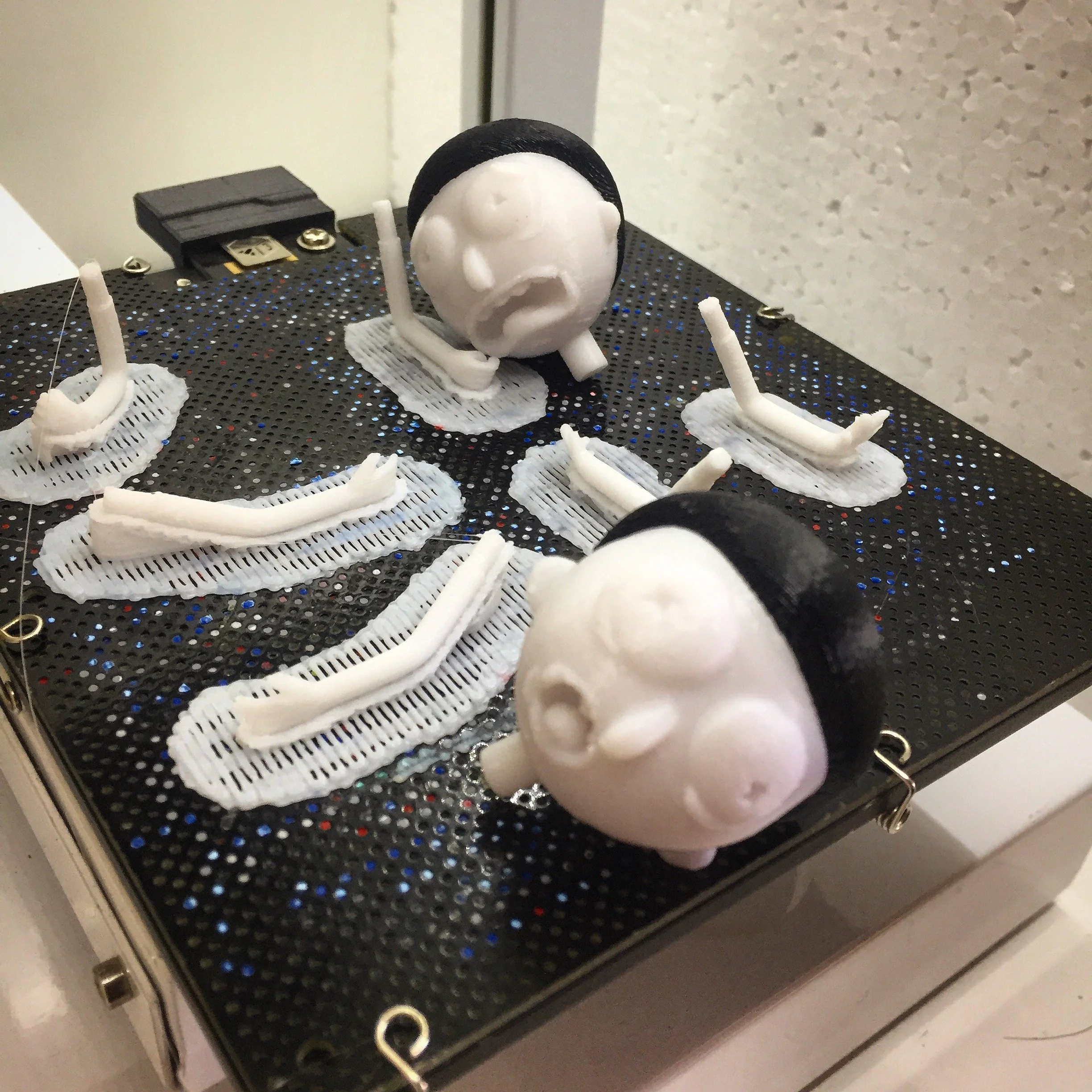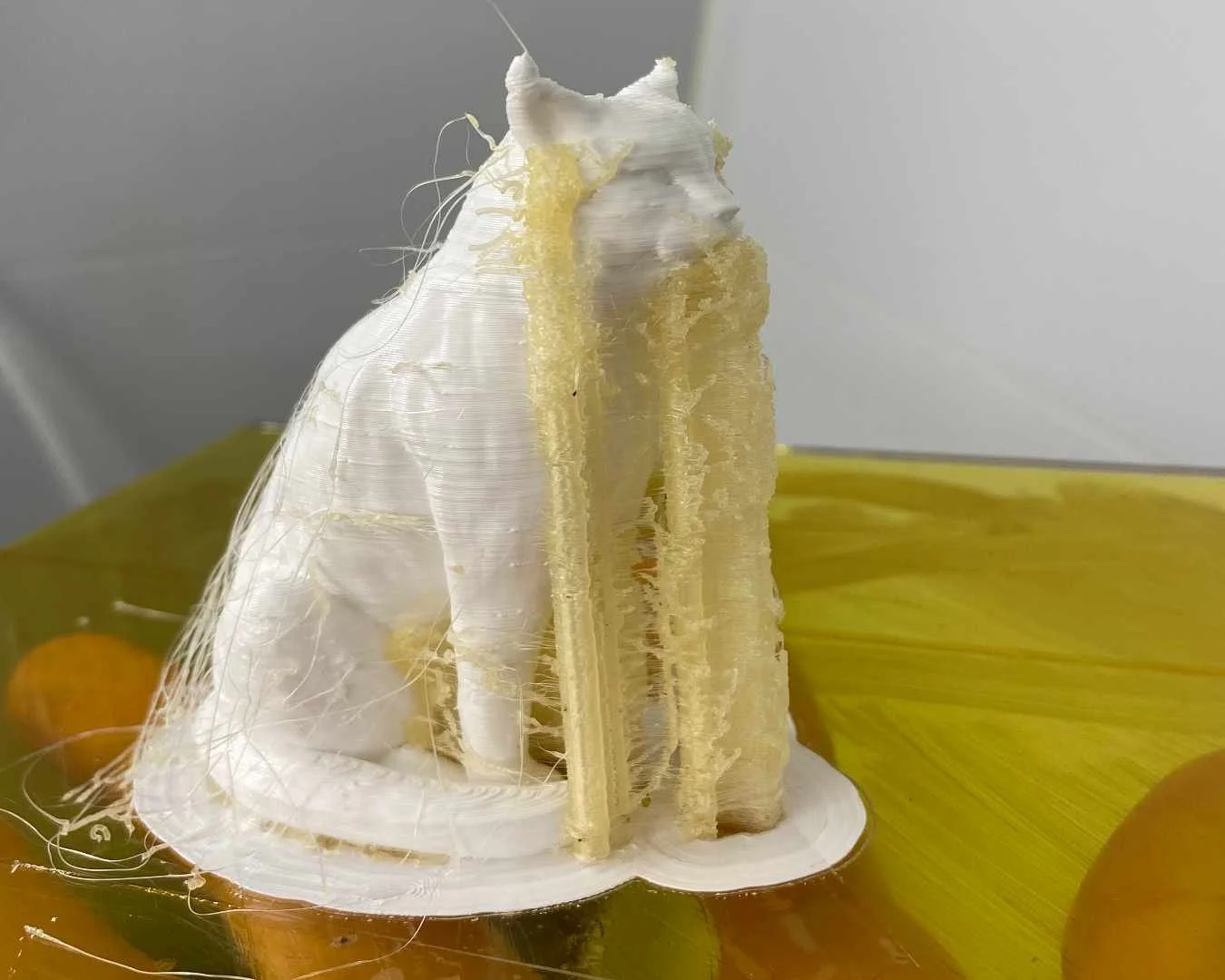Knowledge Guides
Types of FDM/FFF Filaments
Fused Deposition Modeling (FDM) is the most widely recognised 3D printing technology. As an additive manufacturing process, it uses a spool of plastic filament as the build material, that is heated and redeposited as long lines of molten plastic. Over many layers, this forms a three-dimensional object.
There are many different types of FDM 3D printing filament options available. These have different material properties depending on the need, but also have their own challenges and limitations. At InIteration we offer a range of material options which have been valued by our past clients. You can also see examples of what print colours we have available in the COLOUR PALETTE OF FDM/FFF FILAMENT PRINTS article.
The benchmark to compare the durability of different filaments is the “Glass transition temperature”, this is the temperature that the plastic becomes pliable. Other properties such as the plastic’s brittleness, UV resistance, or quality of printing also factor into the material’s strength.
The list of FDM plastics below has been separated into two groups:
Common filaments:
Common filaments are always in stock. They are easy for us to print, tried and tested, and easy to source.
Less common filaments:
Less common materials may not be on our shelves, but can always be ordered in. These less common materials are often more challenging to print with, which will be reflected in your custom quote.
Common:
PLA - Polylactic acid
PLA is the most common filament used with FDM 3D printing, and produces reliable and clean results. PLA is easier to use than other filaments as it requires lower printing temperatures, therefore has minimal warping. Additionally, it produces less noxious fumes during printing compared to other plastics. This makes PLA 3D printing ideal for rapid prototyping, decorative and display models and most indoor use-cases.
While PLA is an excellent choice for many applications, it has poor tensile strength and is more brittle compared to other plastics (ABS or PETG). This means it is more prone to cracking or breaking under stress or impact. Additionally, PLA 3D prints have a lower glass transition temperature at which point the plastic softens and becomes more pliable (typically around 60-65°C). For example, you may discover your PLA 3D prints have distorted when left in the hot sun, or on a heater. If you need higher strength and durability, you may want to consider other materials like ABS, PETG, or nylon, which have better mechanical properties and temperature resistance.
PETG - Polyethylene terephthalate
PETG is a highly durable and impact-resistant plastic, more so than PLA. It has a higher heat resistance, making it suitable for applications that require exposure to higher temperatures (glass transition temperature about 80-85°C). PETG 3D prints are less prone to warping during printing compared to ABS, and produce less noxious fumes. Another feature of PETG is that it is more UV resistant, which is ideal for outdoor use.
However, PETG filament can be trickier to print with as it requires higher printing temperatures and slower printing speeds. It also has a slightly lower level of detail compared to PLA and ABS due to its higher viscosity, and can require greater post printing cleanup. Overall, PETG is a popular choice for functional and durable prints that require good mechanical properties and moderate heat resistance.
ABS - Acrylonitrile butadiene styrene
Known for its durability and strength, ABS is an excellent choice for functional parts and engineering applications. It offers good impact resistance and can withstand higher temperatures (glass transition temperature about 105°C), making it suitable for components exposed to heat and mechanical stress. It offers UV resistance, but not as high as PETG. However, unlike PETG, ABS has lower viscosity, resulting in smoother surfaces and higher levels of detail when printed.
The styrene component of ABS means that objects 3D printed in ABS can be chemically treated to smooth the surface (see Acetone Smoothing). This also makes ABS easier to glue. The ABS printing process produces unsafe fumes, therefore adequate ventilation is essential.
ABS filament can be challenging to print as it is more likely to warp and shrink compared to other materials. It requires the use of a heated print bed and enclosure. Larger 3D prints may be more prone to warping. Despite these challenges, ABS remains a versatile and robust plastic.
Find examples of PLA, ABS, and PETG 3D printing in our articles:
Less Common:
Wood PLA
Wood PLA filament is a composite material of PLA plastic and finely ground wood fibres. This produces 3D printed objects with a natural wood-like texture, and the layering gives the appearance of wood grain. The prints can be sanded for a shinier finish, though the rough texture is often a desired feature. A distinct woody scent is emitted during printing.
Wood PLA is well-suited for creating decorative items, sculptures, and parts with a rustic feel. However, it's worth noting that wood PLA is slightly more abrasive to a brass nozzle than regular PLA, this requires attention to nozzle maintenance.
PLA Metal
Metal PLA filaments are composite materials made of PLA plastic and metal powder, which produces a metallic finish when 3D printed. Various brands offer metal filament options, such as copper, brass, bronze, steel, and iron-filled filaments. Metal PLA prints are noticeably heavier than regular PLA, and can be post-processed to create various patinas or achieve a polished finish. The unique finish makes Metal PLA ideal for 3D printing jewellery, sculptures, and replicas of museum items. That being said, take care of metal PLA 3D prints as they are more brittle than regular PLA 3D prints.
Additionally, 3D printing with metal PLA will accelerate the wear of standard brass nozzles due to abrasive particles, and demands adjustments to printer settings. Despite these considerations, metal PLA filament presents an accessible way to add a touch of metal-like sophistication to your prints without intricate metalworking techniques.
PVA - Polyvinyl alcohol
PVA filament is a water-soluble 3D printing material renowned for its role as a support material. When used in conjunction with another primary printing material, such as PLA, PVA can create intricate prints with complex geometries that require supports. After printing, PVA supports can be dissolved in water, leaving behind the desired object. PVA is particularly beneficial for models with overhangs, internal cavities, or delicate features.
PVA filament is sensitive to moisture and can degrade if not stored properly. It also requires specific printer settings and expertise to achieve optimal results. Despite these considerations, PVA filament's ability to simplify support removal for intricate prints makes it an indispensable tool for achieving high-quality, intricate 3D printed models.
TPU - Thermoplastic polyurethane
TPU filament is a flexible and elastic material. It is an excellent choice for fabricating objects that require flexibility, impact resistance, and durability. TPU's soft and pliable nature makes it suitable for creating phone cases, watch bands, shoe soles, and other wearable items. Additionally, it adheres well to surfaces, reducing the risk of warping during printing. However, TPU can be more challenging to print with compared to rigid plastics, as it requires specific printer settings and may be prone to stringing or oozing during the printing process.
Nevertheless, TPU's unique properties make it an ideal choice for functional and flexible 3D prints in various applications where toughness and elasticity are required.
OBC Polyethylene (Olefin Block Copolymer)
OBC filament is an engineering-grade flexible material. It stands out for its dimensional stability and excellent chemical resistance, combining both flexibility and durability while remaining lightweight. One notable application is its use for designing live hinges, where OBC’s bendable nature enables the creation of functional hinges directly within the 3D printed object. This feature makes OBC a go-to choice for applications such as foldable stands, articulated toys, and flexible connectors.
OBC filament can be a challenging material to 3D print with, as it requires specific settings and careful calibration to avoid issues like stringing. It can only be printed on a Polypropylene build surface. Despite these considerations, OBC filament remains a top pick for producing flexible and fatigue resilient prints, particularly those needing live hinges for dynamic movement.
Nylon
Nylon filament is a versatile and durable plastic that is sold in different variations (ie. Nylon, ePA Nylon, Nylon Carbon Fibre, Glass Fibre Nylon). Nylon 3D prints are promoted as having high toughness and high impact resistance, with some flexibility. The plastic also has low friction coefficient and self-lubricating properties, adding to its resistance to wear and tear, and advantageous for producing moving parts.
The different types of nylon filament produce different levels of durability and finish, with the glass transition temperature ranging 70-80°C and up to 110-115°C. Nylon 3D prints exhibit excellent layer adhesion and toughness, making them suitable for functional prototypes, mechanical parts, and engineering components.
However, nylon filament can be hygroscopic, absorbing moisture from the air, which can impact print quality and require careful storage. Nevertheless, nylon's exceptional mechanical properties make it a favoured choice for applications where strength and durability are essential.
PC - Polycarbonate
Polycarbonate filament is a robust and high-performance material. It yields strong and durable 3D printed products with a high glass transition temperature at 147°C, making it suitable for engineering applications. Its toughness and temperature stability make it ideal for producing functional prototypes, industrial machine components, and automotive parts that need to withstand mechanical stress and high temperatures.
While PC parts are durable, printing can be challenging due to high melting point, sensitivity to environment, and poor bed adhesion. It typically requires a heated build platform and an enclosed 3D printer to control temperature and minimise warping.
ASA - Acrylonitrile styrene acrylate
ASA filament is advertised as “an upgraded version of ABS”, reporting better UV resistance and slightly easier to print with than ABS. ASA is noted as having high impact resistance, durability, and temperature resistance (glass transition temperature at 100°C). ASA 3D prints are suitable for outdoor projects, functional prototypes, and parts requiring strength. ASA, like ABS, can be challenging to print due to heat sensitivity. However, once printed, ASA parts are heat-resistant and sturdy.
HIPS - high-impact polystyrene
HIPS filament is a versatile 3D printing material closely related to ABS. It requires similar print temperature and conditions as ABS, but the notable distinction is that HIPS can be dissolved in Limonene. In dual-nozzle printers and multi material printers, HIPS can be used as the support material for ABS, and later dissolved. This makes HIPS and ABS a convenient choice for producing complex prints with easily removable supports, eliminating the need for labour-intensive post-processing. While HIPS offers efficient support removal, it emits a noticeable odour during printing and requires careful temperature management to prevent warping. Despite these considerations, HIPS filament's support capabilities and versatility make it a valuable asset for intricate and refined 3D printing projects.









